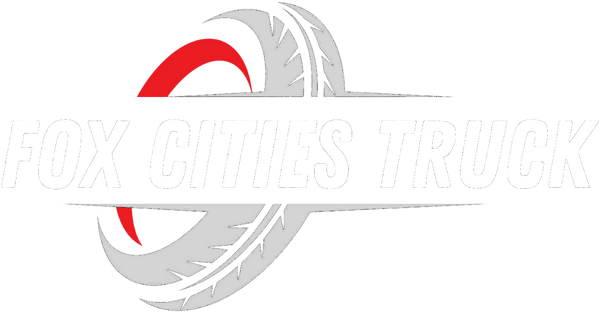
Top 5 Aftermarket Parts to Boost Truck Performance
Share
Introduction
Ever feel like your truck has more to offer? Like it's holding back just a little bit? You’re not alone. Many truck owners feel the same way, especially when they rely on their vehicle for heavy-duty work or just love the thrill of a powerful ride. That’s where aftermarket truck parts come in.
Think of these parts as performance-boosting vitamins for your truck—designed to help it work smarter, not harder. Whether you're towing, off-roading, or just looking to improve fuel efficiency, the right upgrades can make a world of difference.
Cold Air Intakes – Breathe Easy
Your engine needs air to burn fuel, just like we need oxygen to breathe. A cold air intake brings in cooler, denser air, which helps your engine produce more power. It’s a simple change with noticeable gains.
Benefits:
- Improves throttle response
- Increases horsepower
- Slight boost in fuel economy
Plus, installation is often DIY-friendly, making it a great first upgrade for any truck owner.
Performance Exhaust Systems
Let your truck exhale better with a performance exhaust system. Just like how deep breathing helps us relax, a free-flowing exhaust reduces engine stress and boosts efficiency.
Why it matters:
- Enhances sound and power
- Increases horsepower and torque
- Reduces backpressure on the engine
Whether you want a growl or a roar, there's a setup to suit your taste.
Tuners and Programmers
Think of tuners like personal trainers for your truck’s computer. They help you customize performance settings for better fuel economy, towing capacity, or speed.
Key perks:
- Adjust engine timing and fuel-to-air ratio
- Optimize transmission shifts
- Improve fuel efficiency on long hauls
With the press of a button, you can tailor your ride to your needs.
Upgraded Suspension Systems

If your truck’s suspension feels like it’s had one too many potholes, an upgrade might be in order. Aftermarket suspension kits improve handling, ride comfort, and off-road capability.
Top upgrades include:
- Lift kits for ground clearance
- Heavy-duty shocks for towing
- Smoother ride on rough terrain
This is especially helpful if you drive in areas with tough roads or go off-roading.
High-Performance Tires
Your tires are the only contact point with the road, so upgrading them can dramatically change how your truck handles. High-performance tires offer better grip, braking, and fuel economy.
Types of performance tires:
- All-terrain for off-road use
- Highway tires for smoother rides
- Mud-terrain for rugged environments
Better tires mean better control, plain and simple.
Why Aftermarket Parts Matter
Aftermarket truck parts aren’t just about going fast or looking cool—they’re about getting the most out of your vehicle. They allow you to personalize performance, increase longevity, and sometimes even save money in the long run.
How These Parts Improve Fuel Economy
It might sound strange, but adding power can actually save fuel. A truck that breathes easier (cold air intake) and shifts more efficiently (tuner) doesn’t work as hard, which means it burns less gas.
Impact on Towing and Hauling
When towing heavy loads, stock setups can sometimes fall short. Aftermarket suspension, tires, and tuners can increase towing capacity and give your truck the stability it needs under pressure.
Think of it like putting better shoes and stronger legs on a marathon runner.
Installation Tips and Considerations
Before you rush to upgrade everything at once:
- Make a plan based on your goals (speed, towing, off-roading).
- Start with one part and see how your truck responds.
- Always check compatibility with your truck’s make and model.
OEM vs Aftermarket: What’s the Difference?
OEM (Original Equipment Manufacturer) parts are made by your truck’s brand. They’re reliable, but often pricey and not always performance-focused. Aftermarket parts, on the other hand, are built for improvement and customization.
Warranty Concerns with Aftermarket Parts
Worried about voiding your warranty? It’s a common concern. The truth is, aftermarket parts don’t automatically void warranties unless they cause a specific issue. Just keep documentation and install quality parts.
Popular Brands to Look For
Want quality and peace of mind? Consider brands like:
- K&N for intakes
- Borla or Flowmaster for exhausts
- Superchips or DiabloSport for tuners
- Bilstein or Rancho for suspension
- BFGoodrich or Michelin for tires
Cost vs Value: Is It Worth It?

Upgrades can be pricey, but they often pay off in the long run. Better mileage, fewer repairs, and increased resale value are just some of the benefits of investing in good aftermarket truck parts.
Boosting Performance on a Budget
Don’t have a big budget? No worries. Start with the basics like a cold air intake or tuner. You can build your upgrades step by step without breaking the bank.
Final Thoughts and Takeaways
Your truck is more than just a vehicle—it’s a partner in work, adventure, and everyday life. With the right aftermarket truck parts, you can unlock its true potential. From more power to better handling and efficiency, these upgrades make your ride not just better—but smarter.
FAQs
1. Do aftermarket truck parts affect insurance?
Sometimes. If the upgrades increase the truck's value or performance, you should let your insurer know to avoid issues with coverage.
2. Can I install aftermarket parts myself?
Many can be installed at home, especially cold air intakes and tuners. For complex parts like suspension systems, a professional is recommended.
3. Will aftermarket parts void my warranty?
Not necessarily. Under the Magnuson-Moss Warranty Act, a dealer must prove an aftermarket part caused a problem before denying coverage.
4. Are aftermarket parts better than OEM parts?
For performance, often yes. OEM parts are great for general reliability, but aftermarket parts are usually designed for specific improvements.
5. How do I know which parts fit my truck?
Always check the manufacturer’s compatibility guide or consult with a trusted mechanic or parts dealer before buying.
